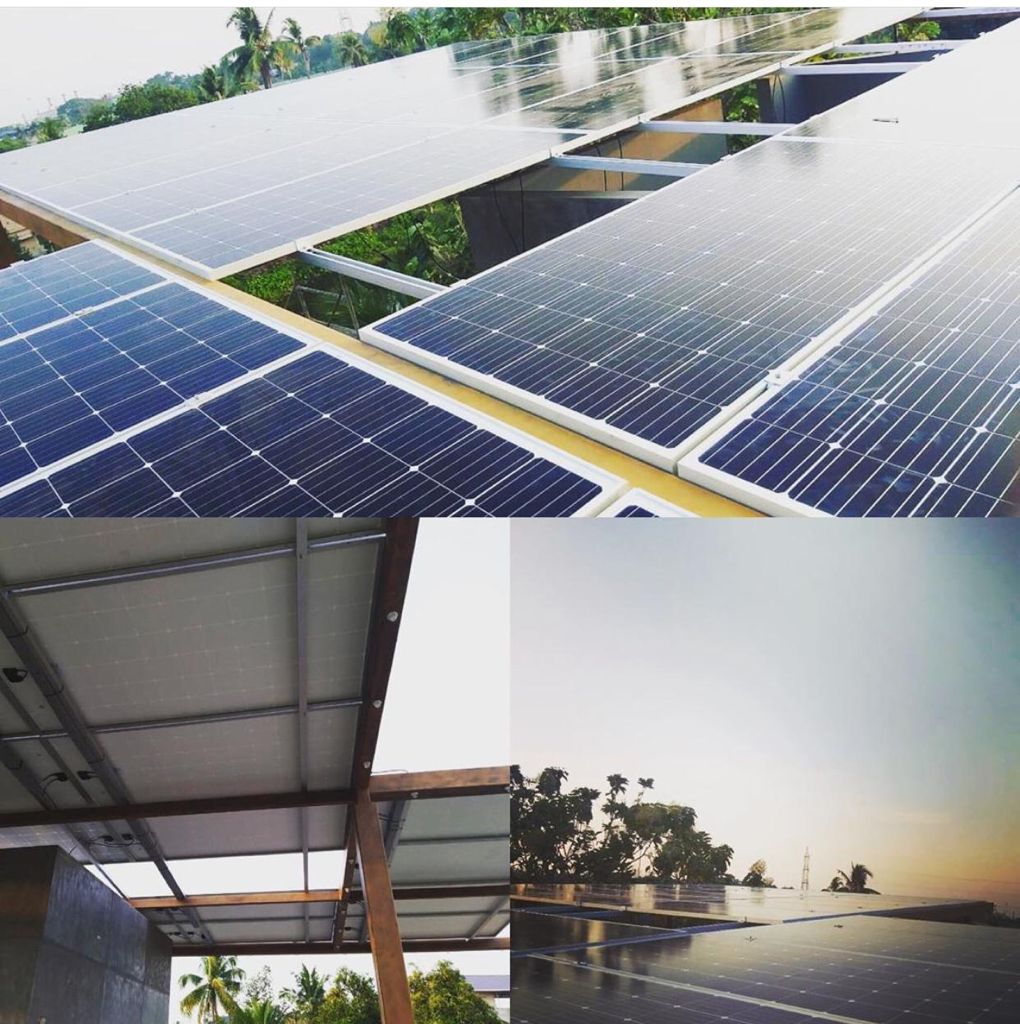
The hybrid solar energy system is a combination of grid and off grid based solar systems. Simply put, it can be defined as a grid connected solar power system with additional battery backup. It has the advantage of storing energy in the battery when the solar panel is operating at its peak and recovering the energy stored during peak evenings in the event of a high power or any grid failure. Additionally, the extra energy generated by one can be sold and paid for through a local grid-connection.
Components of the hybrid solar system:
A hybrid power system combines on-grid and off-grid components. The following components are used when installing a hybrid solar system in your home or commercial space:
Solar Panel:
The solar panel is the foundation of the solar energy system without which strong solar radiation cannot be extracted and used. Solar radiation in the form of photons falls on the solar panel and generates electricity in the form of DC energy.
Direct Current Distribution Box (DCDB):
The primary function of DCDB is to combine multiple strings of solar panels into one. This box contains protective components such as miniature circuit breaker (MCB), fuse and surge protection device.
Charge controller:
This component is integrated with the battery to control the amount of charge streaming into the battery. The main task of the controller is to control the flow of charges, prevent the battery from overcharging and extend the life of the battery.
Hybrid Inverter:
An inverter is an important component of a solar system that converts DC energy generated from a solar panel or battery into usable AC energy. The inverter offers monitoring of the energy consumed, received, consumed or stored in the battery; It helps to monitor the performance of the solar panel and the battery.
Alternating Current Distribution Box (ACDB):
The primary function of the ACDB is to protect the appliances from any fault that occurs in the hybrid inverter, it consists of protective appliances such as a miniature circuit breaker (MCB), fuse and surge protection device.
Batteries:
The primary function of the ACDB is to protect the appliances from any fault that occurs in the hybrid inverter, it consists of protective appliances suFor off-grid and hybrid solar systems, batteries play an important role in storing the surplus energy generated by the sun during the day, and then recovering when the solar panel is unable to generate the required power during cloudy weather or at night. For rechargeable power systems, rechargeable batteries, such as lithium or lead-acid batteries, are recommended.ch as a miniature circuit breaker (MCB), fuse and surge protection device.
Working of solar hybrid system:
When solar radiations in the form of photons are incident on the solar panel, direct current(DC) is generated using the photovoltaic principle. The DC energy generated depends on the solar radiation intensity.
- This generated DC energy is fed into the charge controller which helps in regulating the amount of power to be supplied to the battery.
- Depending on the power requirement by different appliances, the inverter draws energy from these batteries and converts it into a usable alternating current.
- This generated AC energy is supplied to different loads through the wiring system.
- When the battery is fully charged then the solar panel supplies the surplus generated DC power through the inverter and net meter to the utility grid-connected and gets paid for this surplus power.
- The stored energy in the battery is retrieved during the non-sunny day or at night depending on the requirement. Advantages:
- Reduced grid dependency – standalone applications.
- Hybrid inverters come with backup power capacity thus providing uninterrupted power under any circumstances. It allows consumers to consume power from grid, battery or solar.
- It can be used as an off-grid solar energy system in case of power failure.
- Can retrieve stored energy during cloudy weather or peak evening time (when tariff rates are high) thus saving the electricity bills Disadvantages:
- Higher installation cost
